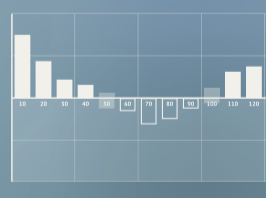06.27.2025
Sausage casings bulletin, June 27, 2025

Runner market commentary
...

Technically-driven selling at the 10-day moving average also weighed on prices but buying at the May 6 low limited the decline for the second consecutive day. Strength in the Canadian dollar and the slow pace of exports are the main bearish fundamental factors and combined with the weakness in soybean values more than offset any concerns about drier-than-normal conditions in portions of the Canadian Prairies.
On the Matif exchange, rapeseed futures broke above resistance at €374 and tested the highs set in October before selling during the last hour of trading drove prices to settle just below the high of the day. Concerns about hot and dry weather in France and suboptimal growing conditions in some of the Black Sea producing regions have triggered the rally that has driven the nearby contract up almost €15 per tonne since July 3.
Soybean futures continued to move lower on Wednesday with most contracts down more than 1/2 percent (November contract – 5 1/2 cents per bushel). Futures tried to rally ahead of the noon weather maps. However, when the forecast continued to suggest that any period of hot and drier-than-normal conditions that develop over the next two weeks will be minimal traders pushed the market lower and tested the psychologically important $9 per bushel level. Prices settled just above the key level, but seem poised to continue to move lower unless the outlook for hot and dry weather returns or analysts start to believe the United States Department of Agriculture (USDA) will not raise its estimate of soybean acreage in the August World Agricultural Supply and Demand Estimates (WASDE) report. Funds were reported sellers of 5,000 soybean contracts, 2,000 soybean meal contracts, and 3,000 soybean oil contracts.
Fund spreading added to the weakness in soybean oil futures due to the decline in soybean values and lower crude oil prices. Anecdotally, the recent trend has been for funds to buy soybean oil and sell soybean meal on days when soybean futures decline. The fund activity has kept the November contract trading in a range between 28 and 28.5 cents for most of the last two months. However, fund selling over the previous two days has driven the November contract through the lower end of the pennant formation and below the 50-day moving average for the first time since July 5. The change in the funds positioning is due to the significant decline in the domestic soybean oil use implied by the data published in the National Oilseed Processors Association’s (NOPA) monthly report. If the National Agricultural Statistics Service (NASS) confirms the weakness in domestic demand in its Fats and Oils report, scheduled for release on August 1 at 2 p.m. (CDT), soybean oil prices could remain under pressure in the short run. If soybean futures continue to move lower and data indicates slowing domestic demand, the November contract could potentially test the low set on May 13 that was set just below 27 cents. However, it seems unlikely that weakness in domestic demand will continue in the long run, and The Jacobsen believes end-users should use the potential decline to extend coverage.
Technically-driven trading and weakness in the ringgit helped palm oil prices rally for the fourth day in the past five with most contracts gaining about 1/4 percent (October contract +7 ringgit per tonne). Buying at the 10-day moving average helped support gains, but selling at the 20-day moving average limited the advance to the same area as the highs set in the last two sessions. The rally in palm oil futures and the decline in soybean oil prices have driven the spread between the two to less than 6.5 cents per pound, which is the upper end of the average range. Traders are also increasingly optimistic about the pace of exports during July, but will carefully watch the cargo surveyor data released on Monday. The Jacobsen believes export volumes remain the key in determining the direction of palm oil futures in the short term. If the pace of shipments accelerates relative to June, palm oil may continue to rally. However, exports will need to keep growing at a relatively brisk pace over the next several months as production ramps up to the seasonal peak during the fall.
Palm oil futures on the Dalian exchange were a little more than 1/2 percent lower (September contract -24 yuan per tonne), and soybean oil contracts lost a little more than 1/4 percent (September contract -18 yuan per tonne). Technically-driven selling at the 10-day moving average and the key psychological level of 4,200 yuan drove palm oil values lower, but both markets have been trading in a range over at least the last week (soybean oil has been trading in a relatively narrow range since the end of June.
06.24.2025
Correction to sausage casings, resale, North American hog runners, whiskered, ex-works North America on June 20: pricing notice

North American hog runners price published on Friday was incorrect due to a formula miscalculation. The original reported price of $1.63 has been corrected to the accurate rolling average...